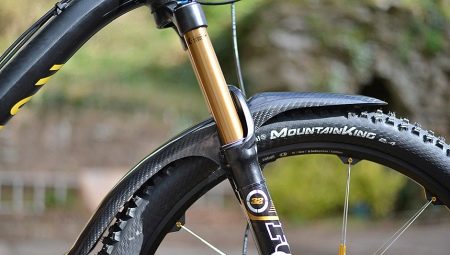Usually wings (shields) are not included in the package of a new bike. Therefore, they have to be bought separately. Now the choice of bicycle fenders is very extensive: they vary in size, material, design, mount and cost. By the way, the cost can vary dozens of times, and it often becomes a decisive condition when buying, although this is not entirely true. Also, wings often acquire, taking into account the simplicity of the fasteners and attractive design, which is also not very correct.
The consumer may not realize that they are intended not only for decoration, but for protection, because the rear wheel throws dirt on the back of the cyclist, and the front - in the face.
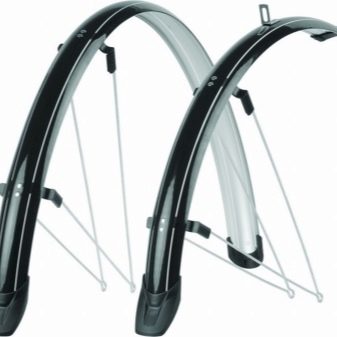
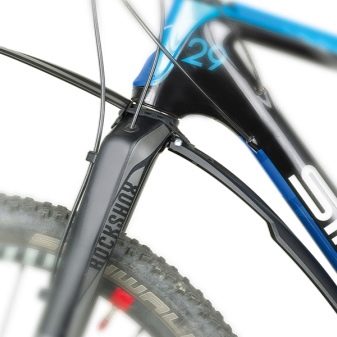
What it is?
Wings are called removable or stationary type metal or plastic protection, which is fixed to the fork, located above the wheels, and protects against various troubles: water, dirt and spray. They differ in mounting options, level of protection, have different sizes.
However, the presence of wings is not able to serve as a guarantee of absolute protection from all that was mentioned above. Not every wing can perform its functions 100%, even despite the great variety of these accessories.
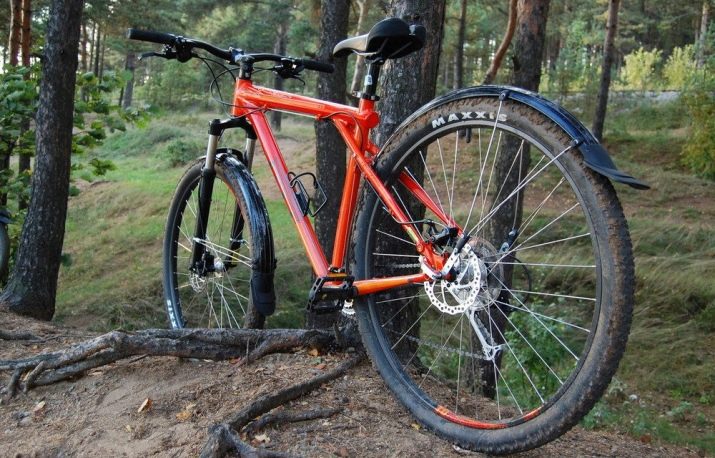
Main varieties
Before taking on the choice of component, you should consider the types of wings. According to the material they are:
- plastic;
- metal.
This is the basic raw material. There are also wings made using carbon fiber (carbon). Their advantage is in the best weight parameters.
By the method of fixation there are:
- quick-detachable;
- stationary (another name - full-sized).
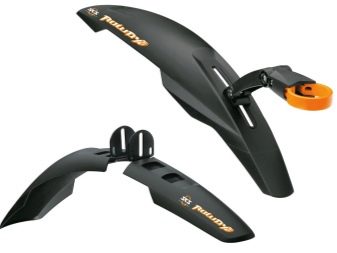
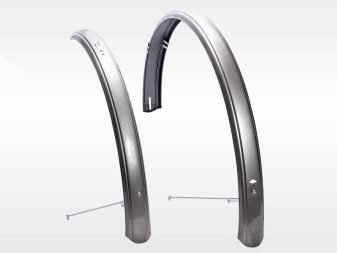
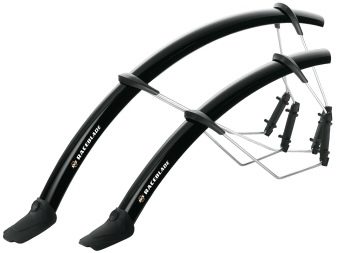
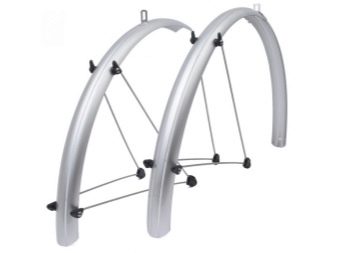
Quick detachable
This type of protection is mostly plastic, more suitable for mountain bikes. It is fixed to the forks through the holes in them. All screws are in the kit with the item.
Only before purchasing do you need to make sure that these holes are present on the bicycle forks.
With another development of events, you will need a quick-release protection with a different fixation method. The rear wing, by means of a clamp or a belt, is mounted on a pin connecting the saddle to the frame.
The front wing is equipped with a bolt screwed into the front fork bushing, securing it. The structure of the wings makes it possible to adjust the height.

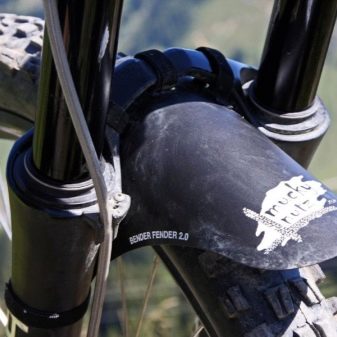
The advantages of this type include:
- little weight;
- ease of installation and dismantling;
- simplicity in cleaning;
- impressive clearance between the wing and the tire.
By the way, an equal distance from protection to the tire has both positive and negative points. Mountain bike is equipped with a solid tire tread. When the distance to the protection will be insignificant, dirt will begin to accumulate under it, and it will be difficult to clean it from there. And with a long distance, clods and splashes will scatter in different directions, reducing the practicality of the bicycle wing.
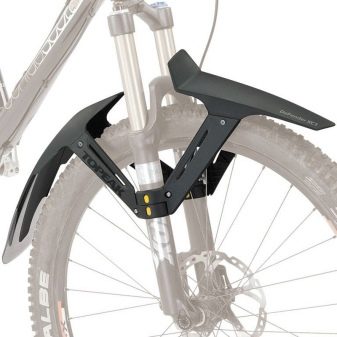

The disadvantages of quick-detachable components include:
- low level of protection (a consequence of a large clearance);
- low strength (made, as a rule, of plastic);
- weak fixation of mounts.
Because this type of flaps rests on a single bolt, and individual samples are completely on the clamp, when moving through areas with difficult conditions for movement, the components can move from place. And taking into account the fact that quick-detachable ones are placed on mountain bike bikes, which rarely move on even asphalt surface, the protection is constantly required to be corrected.
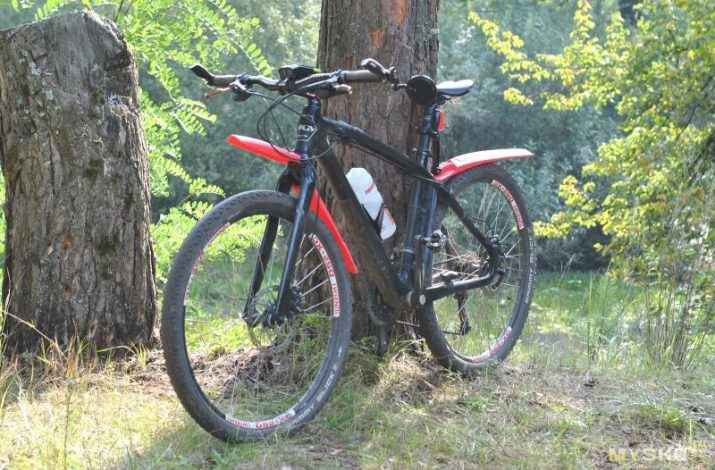
Stationary
Such samples are called full-sized, because they are quite tightly adjacent to the tire and, in essence, cover a significant part of the wheel. As a result, they provide much better protection against splashes and dirt.
In short, the positive qualities of the stationary protection elements are the cons of the quick-changeable ones, and the advantages of the quick-detachable ones are the minus of the full-size ones.
Benefits:
- reliable fixation;
- high level of protection, since the wing is installed close to the tire;
- good durability of the material of manufacture.
Cons of stationary elements:
- specialized ears on the bike mount and fork are needed to fix this type of bike wing;
- dirt may build up between the wing and tire (due to a small clearance);
- higher wing weight;
- non-universal fastening.

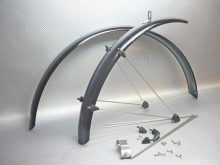
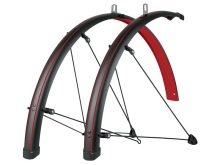
Features
Cyclists claim that full-size protection against dirt with a diameter of 26 inches is worthy of special attention. It not only looks neat, but also protects the cyclist from water and dirt. This is facilitated by the fact that the part covers essentially 50 percent of the wheel.
Production material may be: plastic, metal-plastic or lightweight metal. This makes it possible to produce a not very heavy structure, but rather solid. In some embodiments, the parts have water-repellent characteristics.
Among other things, if there are no suitable fastenings on the bike, you can pick up modifications on which there are specialized clamps that are fixed directly to the vehicle frame.
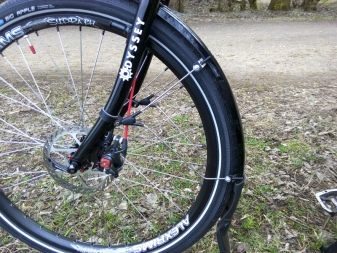
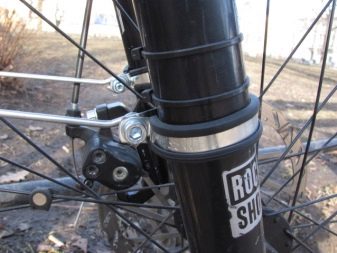
The choice
First of all, it should be understood how all the available options differ. The following options will be important here:
- bicycle wheel size: 26, 27.7 or 29 inches;
- wing creation material: metal or plastic;
- mounting methods: stationary or quick-release;
- in places for mounting on a bicycle;
- protection level: short or long.
Having information about the diameter of the wheel, you can easily select the desired wing.
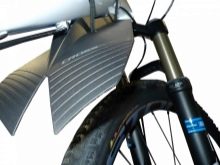
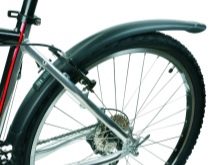
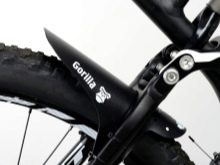
For mountain bike (mountain bike)
The full-sized version of the wings is unsuitable for mountain riding, due to the fact that the massive tread of the mountain bike will draw in dirt and clog it with the clearance between the wheels and the protection. It is better to purchase plastic quick-detachable elements.
For road cycling
The weight and aerodynamic characteristics are a priority here. For "road racers" full-sized plastic (or carbon) wings are used. They weigh quite a bit, perfectly counteract the collection of dirt and are essentially inconspicuous. Driving through the wet streets of the city is uncomfortable without them, therefore, for highway modifications it is advisable to buy full-size samples.
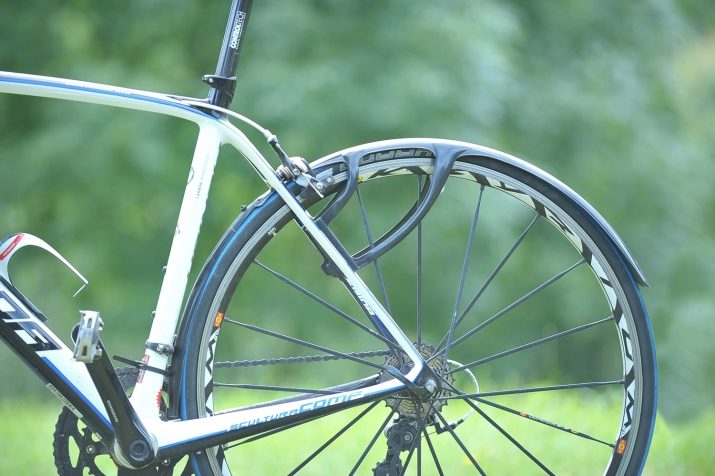
For a light city bike (city bike)
It does not take a long time to "puzzle" in resolving the issue, you can immediately put the protection of a large diameter, which will be closely adjacent to the wheels. Moreover, mud flaps made of rubber are installed on the lower part of the front and rear wings. You can buy them in the sporting goods store additionally or directly with a kit with wings. You can also pick your wings by color (even white).
When doubts arise whether there is a need to purchase double protection on the front and rear wheels, it is preferable to install on the rear. One such inexpensive option would be a metal wing. It is characterized as full-sized, it is also called the classic view, since it covers the largest part of the wheel.
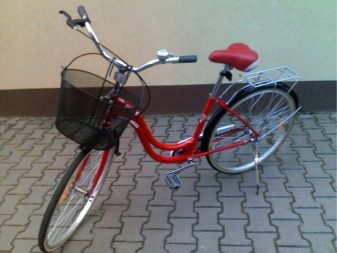
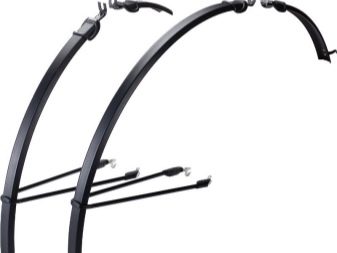
The options listed above show that there is no multifunctional method of protection against dirt and water. But it is indisputable that the more correct the ratio of the wing to the wheel and the denser they are to each other, the greater the level of protection.
Conclusion
I must say that many make the choice of bicycle wings, based on their price. This is not a very correct approach, since inexpensive Chinese-made samples are made of fragile plastic, which can crack or crack as a result of hitting several stones with high speed, as a result of which the protection will cease to fulfill its task. In the same time the cost of branded bicycle wings is not so high as to try to profit from it. In such a case, it is advisable to pay once and enjoy skiing for more than one year, than to change bike wings every season.
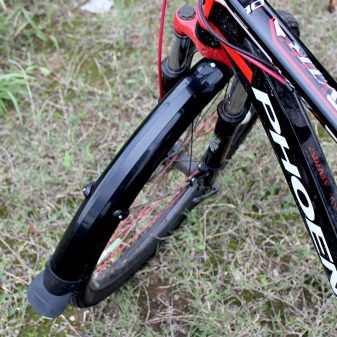
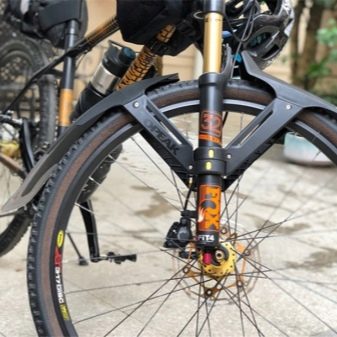
Review and rules for choosing the wings for a bicycle, see below.
